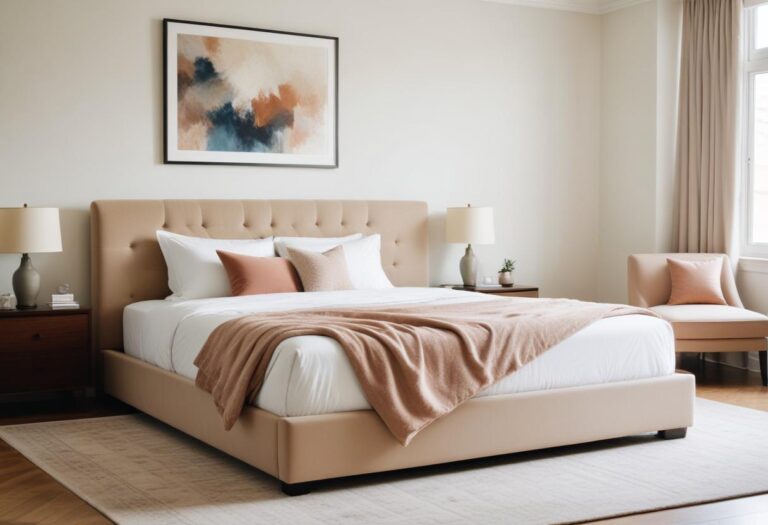The Ultimate Guide to Choosing the Right Paint Colors for Your Home: Transforming Spaces with Perfect Hues.
The Ultimate Guide to Choosing the Right Paint Colors for Your Home is a comprehensive resource that aims to assist homeowners in selecting the perfect paint colors for their living spaces. This guide provides valuable insights, tips, and techniques to help you navigate the overwhelming world of paint colors and make informed decisions that will enhance the aesthetic appeal and ambiance of your home. Whether you are looking to create a cozy and inviting atmosphere or a vibrant and energetic space, this guide will provide you with the necessary knowledge and inspiration to choose the right paint colors that reflect your personal style and preferences.
The Importance of Understanding Color Psychology in Home Decor
The Importance of Understanding Color Psychology in Home Decor
When it comes to decorating your home, choosing the right paint colors is crucial. The colors you select can have a significant impact on the overall atmosphere and mood of your space. That’s why it’s essential to understand color psychology and how different hues can affect your emotions and behavior.
Color psychology is the study of how colors can influence human perception and behavior. It explores the psychological and emotional effects that different colors can have on individuals. By understanding these effects, you can make informed decisions about the colors you use in your home decor.
One of the first things to consider is the primary function of the room you are decorating. Different colors evoke different emotions and can be better suited for specific purposes. For example, if you are decorating a bedroom, you may want to choose calming and soothing colors like blues or greens. These colors are known to promote relaxation and restful sleep.
On the other hand, if you are decorating a home office or a study area, you may want to opt for colors that enhance focus and productivity. Shades of yellow or orange can be stimulating and energizing, making them ideal for workspaces. However, it’s important to strike a balance and avoid using overly bright or intense colors that may cause distraction or fatigue.
Another factor to consider is the size and layout of the room. Colors can visually alter the perception of space. Lighter colors tend to make a room feel more spacious and open, while darker colors can create a cozy and intimate atmosphere. If you have a small room, using lighter shades can help make it appear larger. Conversely, if you have a large room that feels empty, darker colors can help create a more inviting and intimate ambiance.
It’s also crucial to consider the existing furniture and decor in the room. The colors you choose should complement and enhance the overall aesthetic of the space. If you have furniture or artwork with bold or vibrant colors, you may want to opt for more neutral wall colors to create a balanced and harmonious look. On the other hand, if your furniture and decor are more subdued, you can use paint colors to add pops of color and create visual interest.
When selecting paint colors, it’s important to test them in the actual space before committing. Lighting conditions can significantly affect how colors appear. Natural light, artificial light, and the direction of light can all impact the way colors look on your walls. It’s a good idea to paint small swatches on different walls and observe how they change throughout the day. This will help you make a more accurate decision and avoid any surprises once the entire room is painted.
In conclusion, understanding color psychology is essential when choosing paint colors for your home decor. By considering the function of the room, the size and layout, existing furniture and decor, and testing colors in the actual space, you can create a harmonious and inviting atmosphere that suits your needs and preferences. So take the time to explore the world of colors and unleash the transformative power they hold in your home.
Tips and Tricks for Creating a Harmonious Color Scheme in Your Home
Choosing the right paint colors for your home can be a daunting task. With so many options available, it’s easy to feel overwhelmed. However, with a little guidance and some helpful tips and tricks, you can create a harmonious color scheme that will transform your space into a beautiful and inviting home.
One of the first things to consider when choosing paint colors is the overall mood or atmosphere you want to create in each room. Are you looking for a calm and serene space, or do you want something more vibrant and energetic? Understanding the desired mood will help you narrow down your color choices.
Another important factor to consider is the size and layout of the room. Lighter colors tend to make a space feel larger and more open, while darker colors can create a cozy and intimate atmosphere. If you have a small room, consider using lighter shades to maximize the feeling of space. On the other hand, if you have a large room, you can experiment with darker colors to create a more dramatic effect.
When choosing paint colors, it’s also important to consider the existing elements in the room, such as furniture, flooring, and artwork. These elements can serve as a starting point for selecting complementary colors. For example, if you have a bold piece of artwork with vibrant colors, you can choose a paint color that complements or enhances those colors.
Another helpful tip is to use the color wheel as a guide. The color wheel is a tool that shows the relationship between different colors. Colors that are opposite each other on the wheel, such as blue and orange or red and green, are known as complementary colors. Using complementary colors in your color scheme can create a visually pleasing and balanced look.
If you’re still unsure about which colors to choose, consider using a neutral color as a base and adding pops of color through accessories and accents. Neutral colors, such as white, beige, or gray, can create a timeless and versatile backdrop that allows you to easily change the look and feel of a room by simply swapping out accessories.
Lastly, don’t be afraid to test out paint samples before committing to a color. Paint a small section of the wall and observe how the color looks in different lighting conditions throughout the day. This will give you a better idea of how the color will appear in your space.
In conclusion, choosing the right paint colors for your home is an important decision that can greatly impact the overall look and feel of your space. By considering the desired mood, the size and layout of the room, the existing elements, and using the color wheel as a guide, you can create a harmonious color scheme that reflects your personal style and creates a welcoming and inviting atmosphere. Don’t be afraid to experiment and have fun with color, and remember that paint is a relatively easy and affordable way to transform your home.In conclusion, The Ultimate Guide to Choosing the Right Paint Colors for Your Home provides valuable information and tips for selecting paint colors that suit your personal style and enhance the overall aesthetic of your home. The guide covers various factors to consider, such as lighting, room size, and desired mood, and offers practical advice on color combinations and techniques. By following this comprehensive guide, homeowners can confidently choose the perfect paint colors to create a beautiful and harmonious living space.












